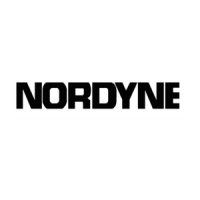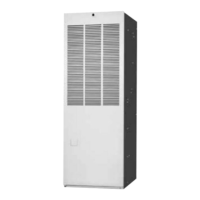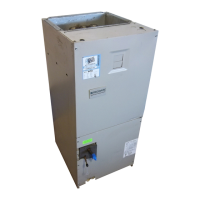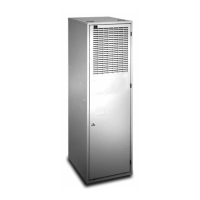23
After the gas piping to the furnace is complete, all
connections must be tested for gas leaks. This includes
pipe connections at the main gas valve, emergency
shutoff valve and flexible gas connectors (if applicable).
The soap and water solution can be applied on each
joint or union using a small paintbrush. If any bubbling is
observed, the connection is not sealed adequately and
must be retightened. Repeat the tightening and soap
check process until bubbling ceases.
IMPORTANT NOTE
Whenpressuretestinggassupplylinesatpressures
greaterthan1/2psig(14inchW.C.),thegassupply
pipingsystemmustbedisconnectedfromthefurnace
topreventdamagetothegascontrolvalve.Ifthetest
pressureislessthanorequalto1/2psig(14inch
W.C.),closethemanualshut-offvalve.
HighAltitudeApplication(NaturalGasOnly)
The installation of this furnace at altitudes above 2,000
feet must meet the requirements of the National Fuel Gas
Code or local jurisdiction. In Canada, the requirements for
high altitude are different and governed by CGA B149.1.
Please consult your local code authority.
WARNING:
Thereductionofinputratingnecessaryforhigh
altitudeinstallationmayonlybeaccomplished
withfactorysuppliedorices.Donotattemptto
drilloutoricesintheeld.Improperlydrilled
orices may cause re, explosion, carbon
monoxidepoisoning,personalinjuryordeath.
The furnaces are shipped from the factory with orifices
and gas regulator settings for natural gas operation at sea
level altitudes. At 2,000 feet, the NFGC requires that this
appliance be derated 4% for each 1,000 feet of altitude.
For example, the input needs to be reduced 8% at 2,000
feet, 12% at 3,000 feet, etc. This deration is in reference
to the input rate and gas heating value at sea level.
To derate the furnace requires knowing the heating value of
the gas at the installation site. Heating values at particular
job sites vary for two reasons:
1. The chemical mixture of the gas varies from region to
region and is expressed as the “sea level heating value”.
2. The heating value varies by altitude. For this reason,
particularly in high altitude areas, the local gas utility
usually specifies the heating value at the residence’s
gas meter as the “local value”.
For added flexibility, two tables have been provided for
natural gas installations with high or low heating values
at sea level. Table 13 & Table 14 (page 38) contain
the orifice sizes and manifold pressure to use at various
altitudes. Table 13 (HIGH) is for natural gas installations
with a heating value of more than 1,000 Btu per cubic foot
and Table 14 (LOW) is for less than 1,000 Btu per cubic
foot. To determine which table to use:
1. Consult your local utility for the local heating value at
your installation.
2. From Table 12 (page 37), find your local heating
value as supplied by the utility company. Follow down
the column and stop at your altitude level.
3. If your sea level heating value is HIGH, use Table 13
or if it’s LOW, use Table 14. See example.
InstallationExample
Elevation: .................................................. 5,000 feet
TypeofGas: ........................................... Natural Gas
LocalHeatingValueofGas: .............................. 750
From Table 12, find 750 and follow down the column,
stop at the 5,000 feet row. The heating value listed is
LOW. Table 14 will be used to determine orifice size
and manifold pressure.
FIRE OR EXPLOSION HAZARD
Failuretofollowsafetywarningsexactlycould
resultinseriousinjuryorpropertydamage.
Nevertestforgasleakswithanopename.
Usea commerciallyavailablesoap solution
madespecically forthe detection ofleaks
tocheckallconnections.Areorexplosion
mayresultcausingpropertydamage,personal
injuryorlossoflife.
WARNING:
After changing the regulator pressure or changing the
orifices, it is required that you measure the gas input rate.
This may be accomplished in the usual way, by clocking
the gas meter and using the local gas heating value. See
Verifying & Adjusting the Input Rate section (page 28).
IMPORTANT NOTE
Observetheactionoftheburnerstomakesurethere
isnoyellowing,liftingorashbackoftheame.
ConvertingfromNaturalGastoLP/Propane
WARNING:
The furnace was shipped from the factory
equippedtooperateonnaturalgas.Conversion
to LP / Propane gas must be performed by
qualied service personnel using a factory
supplied conversion kit. Failure to use the
properconversionkitcancausere,explosion,
propertydamage,carbonmonoxidepoisoning,
personalinjury,ordeath.
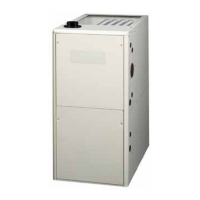
